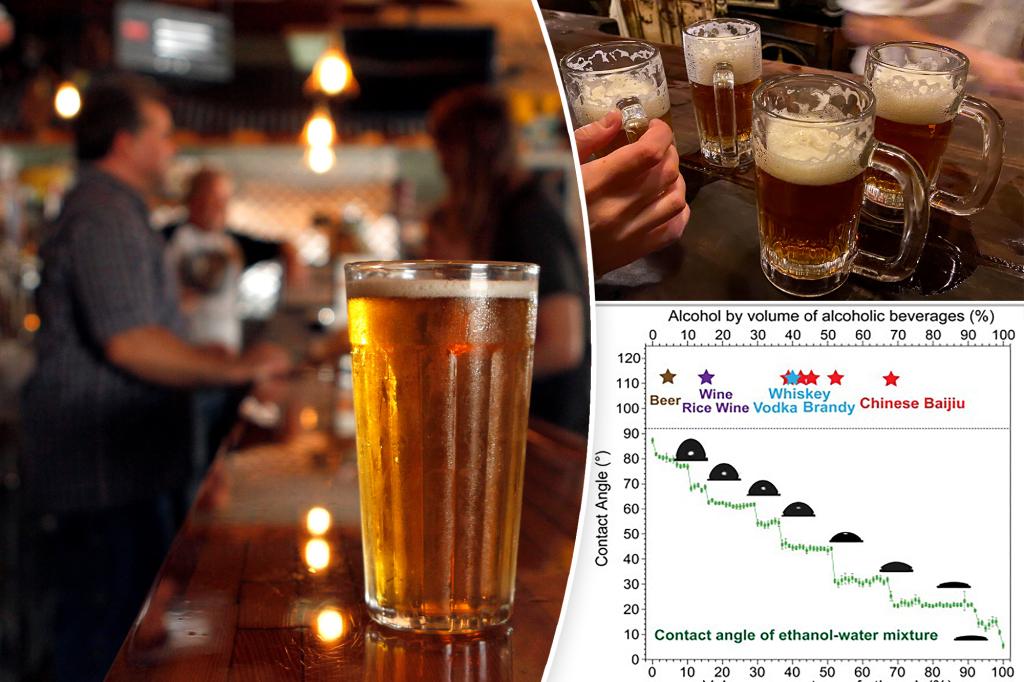A recent study published in the scientific journal Matter revealed that the taste of alcoholic beverages can be influenced by temperature. Researchers at the Chinese Academy of Sciences found that the temperature of the liquid can impact how water and ethanol molecules form, creating different structures that affect the taste of the drink. Specifically, at low concentrations, alcohol forms pyramid-shaped structures around water molecules, while at higher concentrations it arranges itself in a chain formation. This phenomenon is particularly noticeable in drinks with 5% to 11% alcohol, such as beer.
Different types of beers have varying alcohol content, with light beers typically containing 4% to 5% alcohol, regular beers having 5% to 6%, and craft beers varying from 6% to 10%. The formation of chain-like structures in alcoholic beverages served at 41°F, like beer, leads to a unique taste experience that is desired by many consumers. Lead author Lei Jiang explained that the pyramid-shaped clusters become more prominent at low temperatures, which is why cold beer is a popular choice.
In addition to investigating the impact of temperature on alcohol taste, researchers also examined the age-old advice about the order of consuming different types of alcohol to prevent hangovers. Contrary to popular belief, the sequence in which various alcoholic beverages are consumed does not affect the likelihood of experiencing a hangover. Hangovers are primarily determined by the amount of alcohol consumed and the speed at which it is consumed, rather than the specific order in which different drinks are consumed.
Regardless of how enjoyable a cold beer may be, excessive alcohol consumption can have negative effects on the body. Alcohol can lead to dehydration, poor sleep quality, headaches, heart palpitations, stomach issues, nausea, vomiting, and inflammation in various organs as the body works to eliminate toxins and recover nutrients. Despite these risks, the appeal of a refreshing, ice-cold beer remains strong for many people.
Ultimately, the study highlights the intricate relationship between temperature, alcohol concentration, and taste in alcoholic beverages. Understanding how the molecular structure of drinks can impact their flavor experience can provide valuable insights for manufacturers and consumers alike. While cold beer may offer a delightful sensory experience, it is essential to consume alcohol in moderation to avoid negative consequences on health and well-being. Cheers to enjoying a cold beer responsibly.


